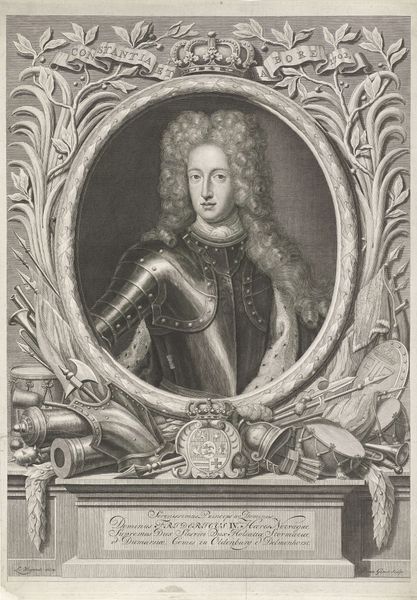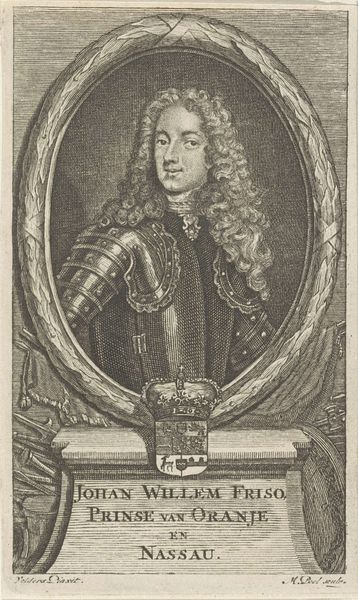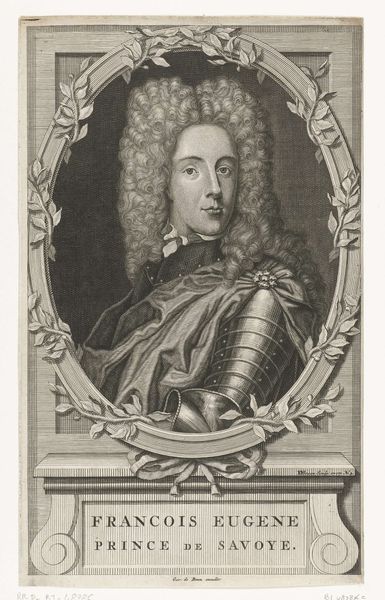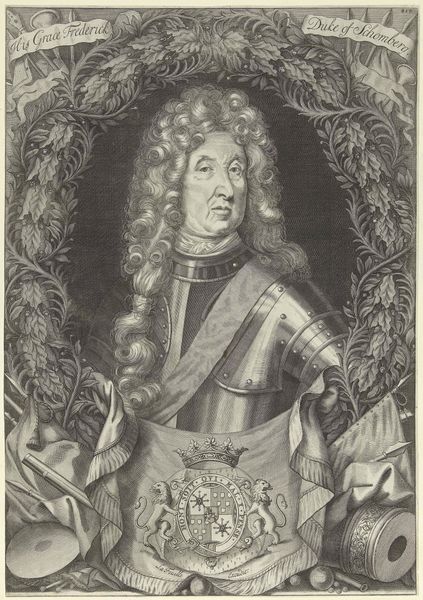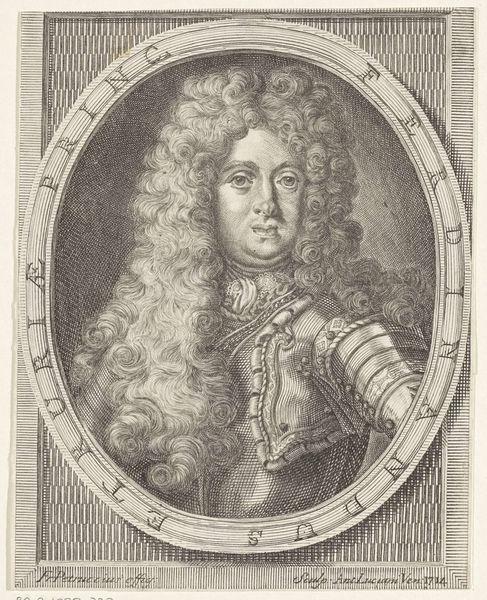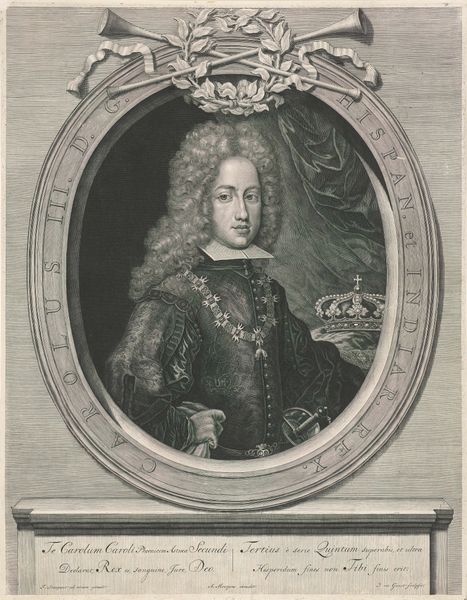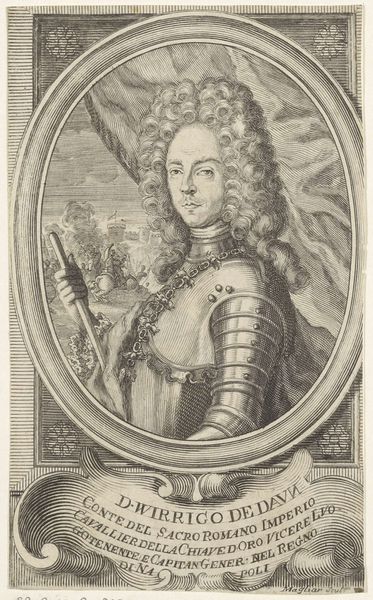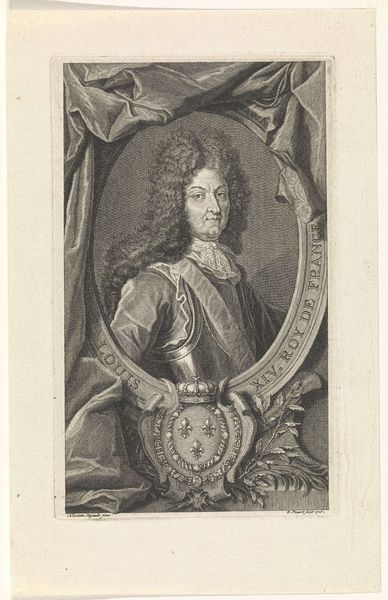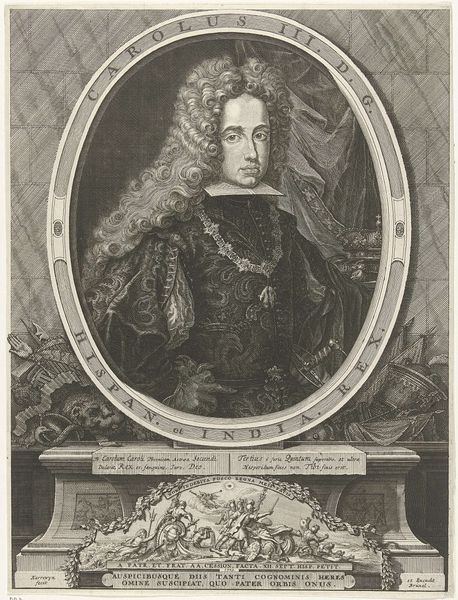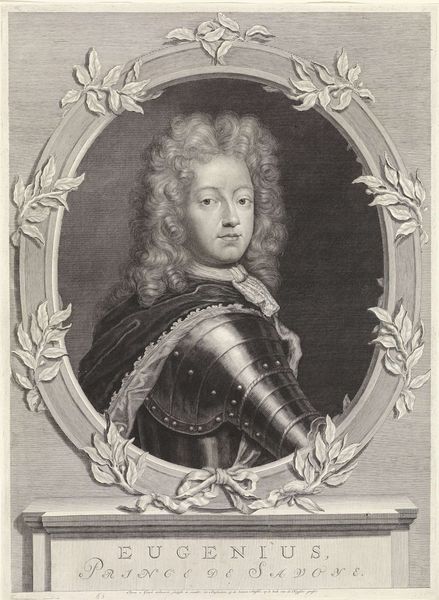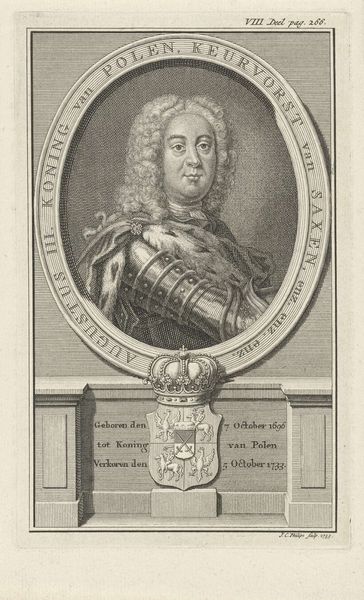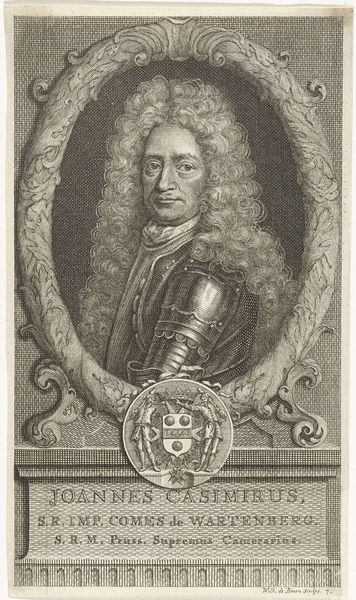
engraving
#
portrait
#
baroque
#
old engraving style
#
figuration
#
line
#
history-painting
#
engraving
Dimensions: height 287 mm, width 178 mm
Copyright: Rijks Museum: Open Domain
Editor: This engraving, “Portret van Karel VI, Duits keizer,” dates back to 1706 and is currently held at the Rijksmuseum. Willem de Broen is credited with its creation. I’m immediately struck by the detail of the lines and the overall formality of the piece. What does this portrait reveal about the historical context it was created in? Curator: This image presents us with Charles VI, but it's not just about the individual. It's about constructing an image of power, legitimacy, and dynasty during a time of shifting political landscapes. Consider the symbols surrounding him – the crown, the sword – all carefully positioned to project authority. And the very act of commissioning such a portrait serves a political purpose. Who was the intended audience? What message was Willem de Broen tasked to communicate through his rendering? Editor: I see your point. It's clearly more than just a likeness. It is almost staged to convey a specific image to the public. What's interesting is the text, that Carles is King of the Spanish and the indies. I wasn't aware. Curator: Precisely. Spain and its empire in the Americas was the subject of considerable political rivalry in the years before and after 1706. Placing "Hispaniarum et Indiarum Rex." right below Charles the VI's name, served as a constant and forceful affirmation of Habsburg claim and of a global extension of imperial rule. How might its display in a particular setting – a court, a diplomatic office – have shaped its reception? And do you think this portrayal is effective at shaping public perception? Editor: It's making me think about the manipulation of imagery for political means, even centuries ago. Now that you mention the original intention of the artist I do believe this to be highly impactful even nowadays! Curator: Exactly. These images become powerful tools. Considering its historical impact helps us decode the messages that still resonate with society. Editor: That's a great way to view it! Thanks. It definitely changes how I see the work.
Comments
No comments
Be the first to comment and join the conversation on the ultimate creative platform.
